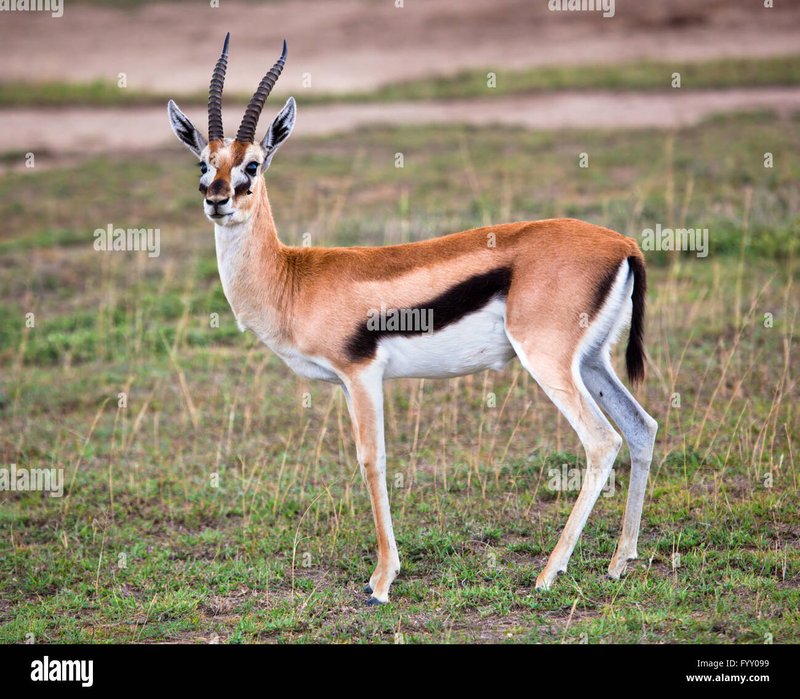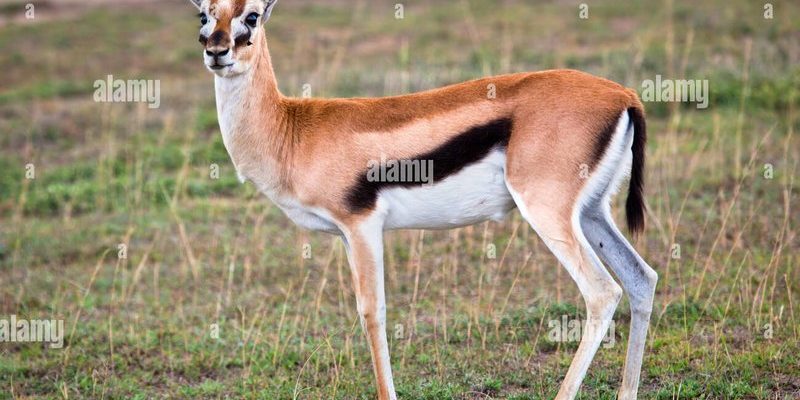
Gazelles are like nature’s gymnasts. They’re not just fast; they’re also incredibly agile, designed to navigate their often harsh habitats. But how do they manage to stay alive despite the many challenges they face, from predators to extreme weather? Understanding their survival strategies makes you appreciate these beautiful creatures even more. So, grab a cup of coffee, and let’s explore the unique ways gazelles adapt to their environments.
Physical Adaptations for Survival
When you think of gazelles, what’s the first thing that comes to mind? Their impressive speed? That’s definitely a big part of the picture. Gazelles are built for speed, with long, slender legs and a lightweight body structure. This incredible design allows them to sprint at up to 60 miles per hour. Honestly, it’s like having a built-in escape mechanism!
But speed isn’t everything. These animals have evolved physically to withstand their challenging habitats. For instance, their large nostrils help them take in oxygen more efficiently, especially during high-speed chases. Their light-colored coats reflect sunlight, which helps keep them cool during the hottest parts of the day. Plus, they’re equipped with sharp eyesight that allows them to spot predators from afar. It’s like having a built-in alarm system that alerts them to danger.
Another fascinating adaptation is how their body temperature can fluctuate. Gazelles can actually allow their body temperature to rise during the day, which helps reduce water loss through perspiration. When the sun goes down and temperatures drop, they can cool down gradually. This neat trick is vital in harsh environments where water is scarce and precious.
Finding Water in Arid Regions
Water is essential for survival, and for gazelles living in arid environments, finding it can be a challenge. You might wonder how these animals manage to stay hydrated when the landscape is dry and unforgiving. The truth is, gazelles have several clever strategies to cope with their watery dilemma.
First, they are incredibly skilled at sensing their environment. Gazelles will often travel long distances in search of water sources, such as rivers, ponds, or even temporary watering holes. It’s not just random wandering; they remember the locations of these water sources from previous seasons.
Moreover, gazelles don’t always rely solely on drinking water. They can absorb a significant amount of moisture from the plants they eat. Many plants in their environment are adapted to store water, and gazelles exploit this by munching on leaves and fruits that have high moisture content. This adaptive feeding strategy is crucial when temperatures soar, and water is hard to come by.
Another interesting point is that gazelles are crepuscular, meaning they are most active during the early morning and late evening. This behavior allows them to avoid the heat of the day and reduces their need for water since they can get moisture from their food during cooler hours.
Predator Evasion Tactics
In the animal kingdom, it’s not just about surviving the elements; it’s also about avoiding becoming someone else’s meal. Gazelles face a range of predators, including lions, cheetahs, and hyenas. So, how do they manage to stay one step ahead? It turns out they have a blend of speed, agility, and smart social behavior.
When a gazelle detects a predator, their bodies react in an instant. They can leap and zigzag, which makes it hard for predators to predict their movements. This quick, erratic behavior is a key survival tactic. You might think of it as a weave and dodge dance, where timing is everything!
Additionally, gazelles often rely on group dynamics for protection. When they move in herds, they can watch each other’s backs. One gazelle might see a predator while others are grazing. The alertness of multiple eyes increases the odds of survival. Plus, there’s safety in numbers; a larger herd can confuse a predator and make it less likely to target any single gazelle.
What’s more, gazelles have developed a unique behavior known as “stotting.” This is when a gazelle leaps high into the air as if to say, “Look how fit I am! You really want to chase me?” It’s a form of communication that demonstrates their strength and stamina, often discouraging predators from pursuing them.
Adaptations to Food Scarcity
Surviving in the wild means dealing with food shortages, especially during dry seasons. Gazelles have a few tricks up their sleeve to ensure they can find enough to eat even when options are limited. Let’s explore how they adapt to these challenges.
First, these animals are herbivores, feeding mostly on grasses, leaves, and shoots. They are selective eaters, often choosing the most nutritious parts of plants. This selection not only helps them stay healthy, but it also maximizes their energy intake. It’s like choosing the richest, most delicious food at a buffet—smart and satisfying!
Gazelles also have incredible digestive systems that allow them to extract as much nutrition as possible from tough, fibrous plants. They can go for long periods without eating, thanks to their ability to conserve energy. This ability is essential during droughts when food is sparse.
Another fascinating aspect is their mobility. Gazelles often migrate to find greener pastures. They have an instinct to follow seasonal rains, which bring new growth. This behavior ensures that they always have access to fresh food sources throughout the year.
Social Structures and Behaviors
Gazelles don’t just roam solo; they thrive in social groups, which adds another layer to their survival tactics. Social structures among gazelles can vary widely, ranging from large herds to smaller family groups. This social behavior is not just for company; it’s integral to their survival.
Being in a group helps gazelles stay alert to dangers. When they’re in a herd, they take turns watching for predators while others feed. This division of labor enhances their chances of survival since there are more eyes on the lookout.
Moreover, social interactions play a vital role in raising young gazelles. Mothers often stay close to their calves, teaching them essential survival skills. From knowing where to graze to recognizing predators, these early lessons are crucial. Herd dynamics also help young gazelles learn from older ones, making them more adept at navigating their environment.
But here’s the thing: not all gazelles thrive in large groups. Some species, like the Grant’s gazelle, are more solitary by nature. Each species has adapted its social behavior to fit its unique survival needs in harsh environments.
The Role of Habitat in Survival
If you’ve ever wondered how different habitats influence gazelles’ survival strategies, you’re in for a treat. Gazelles are incredibly adaptable creatures, and their various species occupy distinct environments, each presenting unique challenges.
For instance, the Thomson’s gazelle is primarily found in the grasslands of East Africa. In this lush habitat, they face different challenges than gazelles in desert areas. Here, they have plenty of grass to munch on, but they must be vigilant against predators who know where to hunt.
Conversely, the Dorcas gazelle, which roams the arid regions of North Africa, must contend with extreme heat and scarce food and water. These gazelles have adapted by developing behaviors that minimize activity during the hottest parts of the day, conserving energy until conditions are more favorable for foraging.
Overall, the adaptation of gazelles to their specific habitats illustrates the incredible flexibility of these animals. By understanding the nuances of their environments, gazelles have become masters at surviving in the wild, showcasing the resilience of nature.
When you think about how gazelles survive in harsh environments, it’s awe-inspiring. These animals showcase a remarkable blend of adaptations—from physical traits to social behaviors—that enable them to thrive despite the challenges nature throws their way.
Their speed, social structures, and unique feeding habits highlight the interconnectedness of their abilities. As they navigate their environments, gazelles remind us of the importance of adaptability and resilience in the face of adversity.
Next time you hear about gazelles or see them in action, remember all the incredible strategies they employ just to survive. It’s a fascinating world out there, and these majestic creatures are prime examples of how wildlife creatively tackles the challenges of life.

